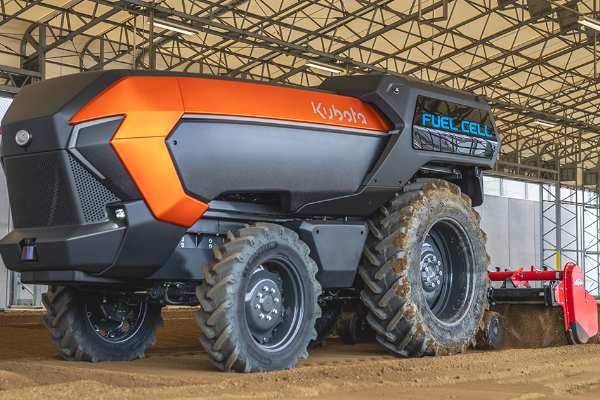In a move towards solving both labour and environmental challenges in farming, Japanese agricultural machinery giant Kubota Corporation has unveiled what it calls the world’s first hydrogen-powered, fully driverless tractor.
The concept model — presented at the “Hydrogen Energy Park!!” event during Expo 2025 Osaka Kansai in Japan — merges a fuel-cell hydrogen powertrain with autonomous and remote-operation capabilities, targeting the twin pressures of an ageing agricultural workforce and decarbonisation of farm equipment.
Japan’s agricultural sector is grappling with a severe workforce squeeze, as more farmers retire than young people replace them. Kubota’s move signals a bid to automate tasks traditionally dependent on human labour.
According to company statements, the autonomous, hydrogen-fuelled tractor integrates remote control and unmanned driving to perform functions such as ploughing, planting and weeding, reducing the need for an operator on board.
In this way, the machine responds to a key demographic challenge: fewer farmers in the field, wider gaps between labour supply and demand.
Clean power and autonomous tech
The tractor concept draws power from a compressed hydrogen fuel cell that generates electricity by reacting hydrogen with oxygen, producing only water as exhaust. This means zero carbon emissions at the point of operation — a major plus in the push for more sustainable farming equipment.
At the same time, the vehicle incorporates advanced autonomous driving technologies: GPS positioning, LiDAR and camera detection enable it to navigate fields, avoid obstacles, and carry out tasks without direct human steering.
The concept model measures about 4,380 mm long by 2,200 mm wide by 2,290 mm high, and is designed to deliver power roughly equivalent to a 100-horse-power diesel tractor.
Kubota says the dual goals behind development are to achieve both environmental sustainability and labour-saving efficiency in agricultural operations.
The company plans to conduct demonstration tests on actual Japanese fields, assess hydrogen supply methods for agricultural settings, and further refine the unmanned driving functions.
Challenges remain
While the unveiling has drawn attention, several hurdles must be addressed before commercial rollout. First, hydrogen-refuelling infrastructure in rural Japan remains limited — a key bottleneck for adoption of large fuel-cell equipment in farm contexts.
Second, regulatory frameworks for unmanned agricultural vehicles — particularly those moving between fields on public roads — are still under development in Japan.
Finally, cost considerations loom large: fuel-cell technology, autonomous systems and remote-control capabilities drive up the upfront investment compared with conventional diesel tractors.
Adoption may depend on leasing models, farmer co-operatives or government subsidies to bridge the gap for smaller operations.
Implications for global agriculture
By combining hydrogen power with autonomy, Kubota is situating itself at the intersection of two major trends in agriculture: zero-emissions machinery and robotics/automation.
The company’s announcement could inspire parallel developments worldwide — particularly in regions facing similar problems of labour shortages and the need to decarbonise farm equipment.
It may also accelerate investment in rural hydrogen infrastructure and autonomous farming technologies.
In short, Kubota’s hydrogen-powered driverless tractor marks a bold innovation that tackles deep-rooted farming challenges.
If the project moves from concept to fielded reality, it could reshape how farms manage both labour and emissions — and serve as a new model for farming in the future.









